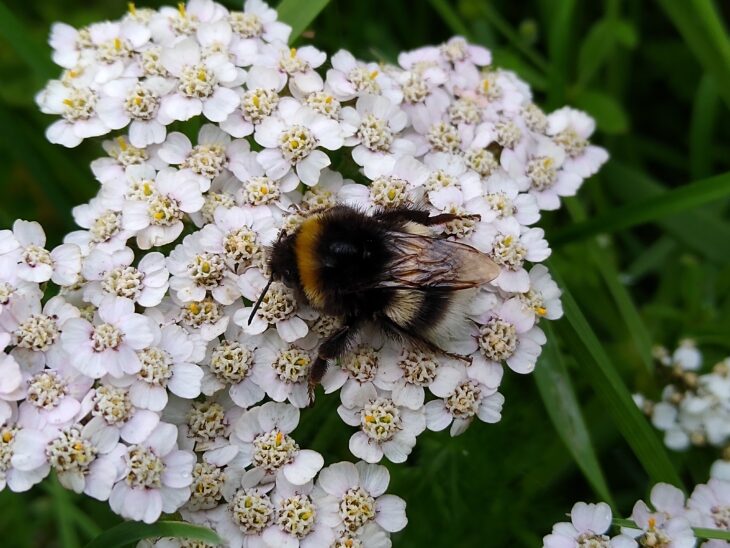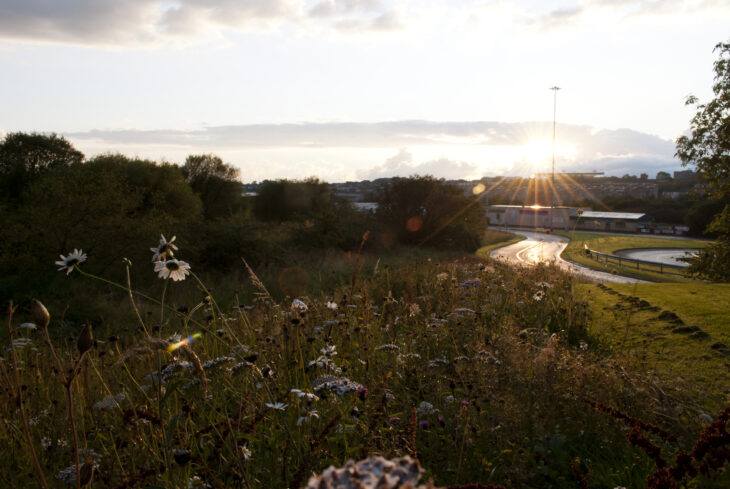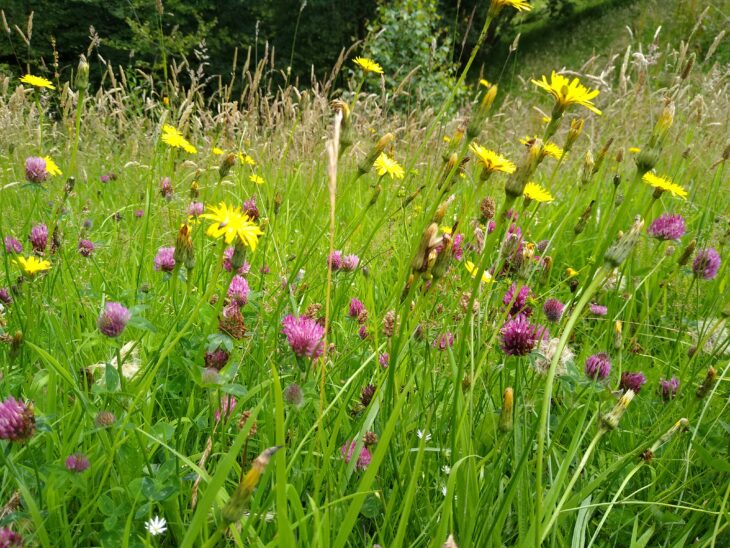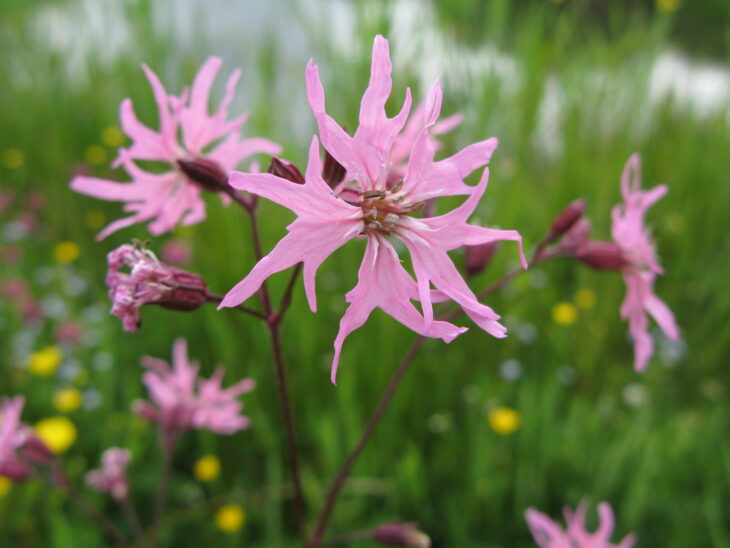Wildlife on the verge
Roadside verges have huge potential for sustaining wildlife – if managed correctly. So what can we do to help? Falls of Clyde ranger Patrick Endall takes a closer look.
If you are at the Falls of Clyde on sunny days in spring and summer, you might come across the rangers walking slowly along the trails, looking closely into the vegetation on either side. It might seem like we are searching for some lost keys, or maybe walking carefully so as not to wake any sleeping badgers.
What we are actually doing however is surveying for butterflies and bumblebees, which each have national monitoring schemes dedicated to tracking their progress. By noting down what we spot on our transect and when, we help to build a picture of what’s going on in the UK as a whole.

The transect we walk passes through various parts of the reserve, with each area having slightly different conditions. As such, you might correctly expect that some areas are better for butterflies and bees than others. Down by the river perhaps, where damp-loving wildflowers bloom? Yes. In sunny glades in the woodland? Definitely.
One of the sections where numbers are highest might surprise you though: right next to the road that runs down to the hydroelectric power station.
We don’t typically think of such places as valuable pieces of habitat, and it’s true that road construction can present a real problem in terms of fragmenting animals’ ranges and exposing them to danger from cars. But there is immense potential here too. The value lies in the verges.

If you put all of the UK’s road verges in one place, they would combine to create an area of 200,000 hectares – roughly the size of Nottinghamshire. That’s a lot of land. Unfortunately though, we don’t tend to look after verges in a way that maximises that potential. Even more frustrating is that the things we could do to help are quite simple: cutting them at slightly different times, and in many cases, cutting them less in general!
Wildflowers need time to flower and then drop their seeds, to ensure they are able to grow again the following year. Too often though, we cut verges to often and too early, depriving them of this opportunity. What’s bad for the plants is bad for pollinators too – if fewer plants grow the following year, there will be less food for insects to feed on, ultimately leading to fewer insects. This in turn deprives animals such as birds and bats of an important food source.
Conversely, the more we do to correctly manage our verges, the richer they will be for wildlife. Beyond providing a succession of flowers for insects to feed on, they can also provide corridors along which small mammals can move, hidden from birds of prey by vegetation, and cover for birds to build their nests. Road verges can’t really be used for much by people, so giving them over to wildlife makes a lot of sense. Imagine how different your journey to work would be if your route were lined with flowers that changed with the seasons.

Because of the drainage ditch that runs along it, our verge at the Falls of Clyde is characterised by species that like it wet: ragged robin, meadowsweet, cuckooflower and marsh thistle among many others. Wander past it on a warm day and you’re likely to be greeted by ringlet or small tortoiseshell butterflies and the buzzing of many happy bumblebees – we have seen early, red-tailed, common carder, white-tailed and buff-tailed bees in that short section alone.

If you’re enthusiastic about these important species and want to set up your own transects near where you live, check out the UK Butterfly Monitoring Scheme or the BeeWalk Survey Scheme to get started. Otherwise, just look out for how the verges look on your route to work – there might be more there than you think!
Patrick Endall, Falls of Clyde Seasonal Ranger
Help protect Scotland’s wildlife
Our work to save Scotland’s wildlife is made possible thanks to the generosity of our members and supporters.
Join today from just £4 a month to help protect the species you love.
Preface
Roadside verges have huge potential for sustaining wildlife – if managed correctly. So what can we do to help? Falls of Clyde ranger Patrick Endall takes a closer look. If …
